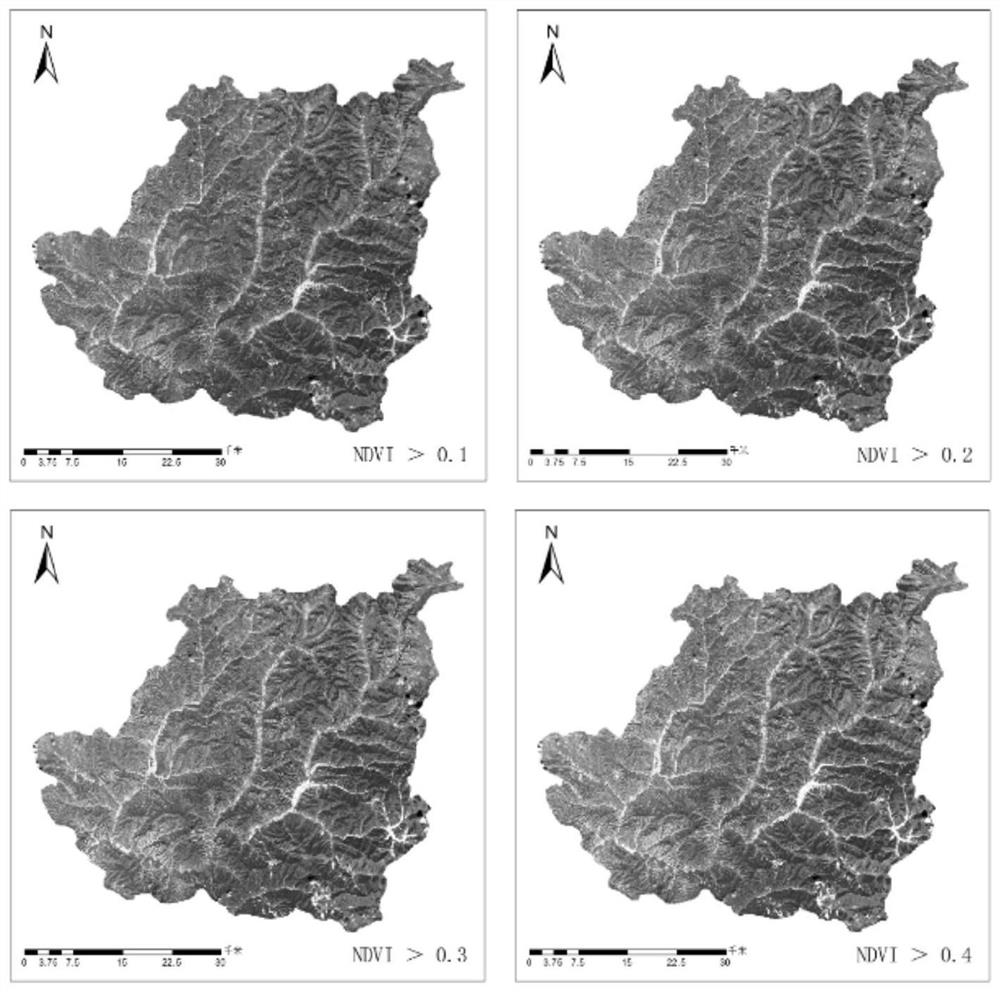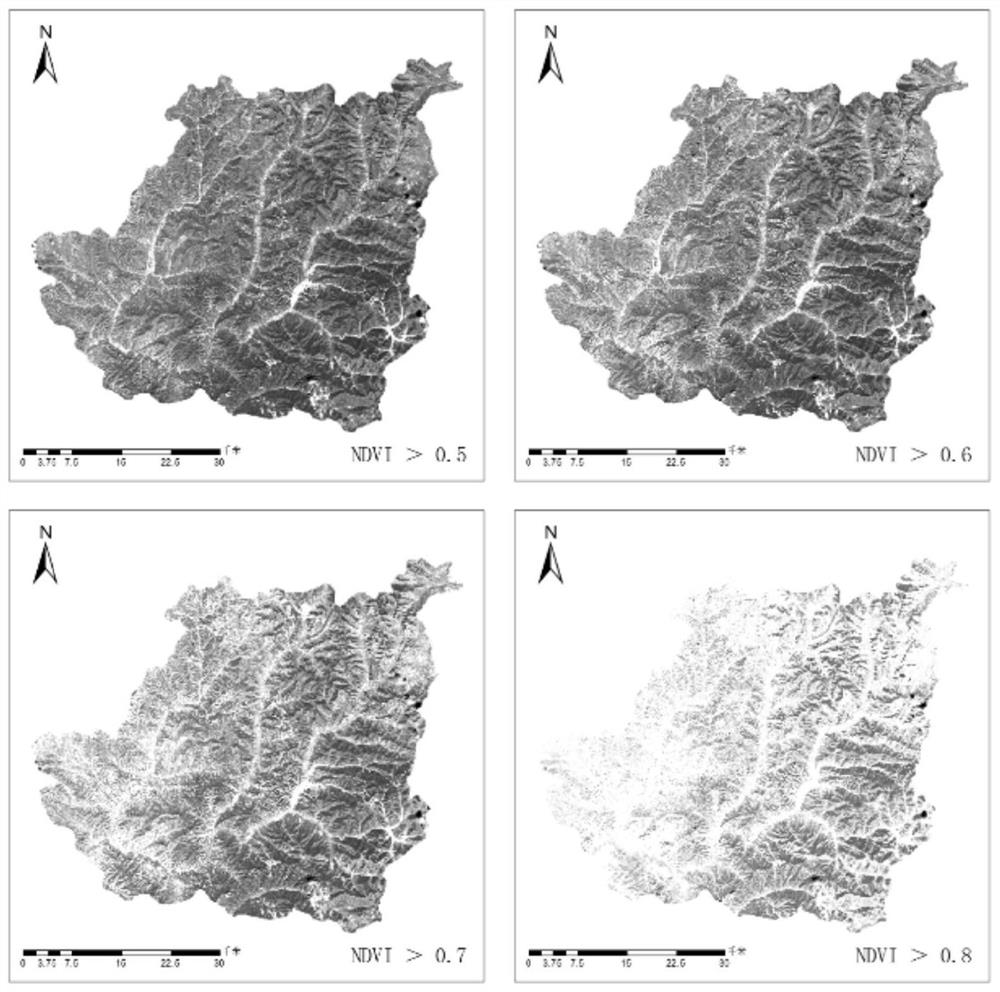Vegetation classification and biomass inversion method based on remote sensing data
A technology of remote sensing data and biomass, applied in character and pattern recognition, instrument, scene recognition, etc., can solve the problems of high cost, high work intensity and long time consumption of field survey methods
- Summary
- Abstract
- Description
- Claims
- Application Information
AI Technical Summary
Problems solved by technology
Method used
Image
Examples
Embodiment
[0034] The demonstration research area is Chongli District, Zhangjiakou City, Hebei Province. figure 1 It is a color satellite image map of Chongli District. The source of remote sensing data is Sentinel-2B satellite data. Sentinel-2B satellite is an important part of the Copernicus program (Global Monitoring for Environment and Security, GMES) component. The Sentinel-2B satellite was launched by the European Space Agency on March 7, 2017 and put into orbit. This satellite can provide images in three bands with resolutions of 10m, 20m and 60m. The L1C satellite remote sensing data used in this study were downloaded from the website of the European Space Agency.
[0035] Atmospheric correction was performed on the 10m and 20m resolution bands of the L1C level remote sensing data through the Sen2Cor plug-in provided by the European Space Agency, and the L2A level data was obtained after correction. Then use the European Space Agency SNAP (Sentinel Application Platform) softwa...
PUM
 Login to View More
Login to View More Abstract
Description
Claims
Application Information
 Login to View More
Login to View More - R&D
- Intellectual Property
- Life Sciences
- Materials
- Tech Scout
- Unparalleled Data Quality
- Higher Quality Content
- 60% Fewer Hallucinations
Browse by: Latest US Patents, China's latest patents, Technical Efficacy Thesaurus, Application Domain, Technology Topic, Popular Technical Reports.
© 2025 PatSnap. All rights reserved.Legal|Privacy policy|Modern Slavery Act Transparency Statement|Sitemap|About US| Contact US: help@patsnap.com



